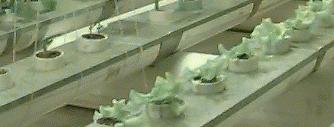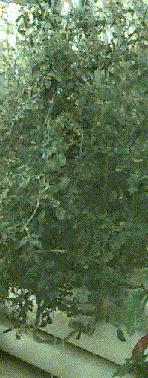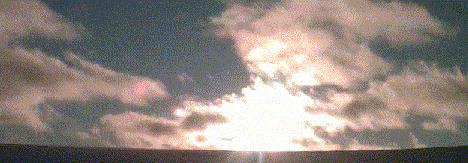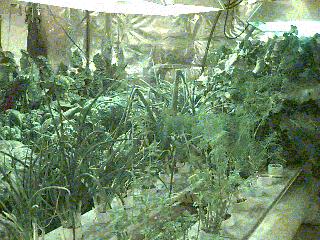 I know that a hydroponic greenhouse is a place were plants grow
without soil. Could you write back and tell me more about them?
I know that a hydroponic greenhouse is a place were plants grow
without soil. Could you write back and tell me more about them?
Dear Mr. Hess,
Hi! How are you doing. In class we are soon going to learn about earthquakes and volcanos. I understand Mount Erebus is a volcano. Is it a fairly big volcano?
Why do you wear glacier glasses to prevent snow blindness? Is there any snow up there because I know Mrs. Barrett said it's a desert.
 I know that a hydroponic greenhouse is a place were plants grow
without soil. Could you write back and tell me more about them?
I know that a hydroponic greenhouse is a place were plants grow
without soil. Could you write back and tell me more about them?
Sincerely,
Heather
Hi Heather,
I am doing good this week. I was sick last week, so I am a little behind schedule in my writing. Mount Erebus is an active volcano, with a lava pool in the cone, as well as smoke coming out the top. It is about 25 miles away, and reaches 2 miles into the sky.
I wear the glasses to protect my eyes. When I have been out on the ice shelf, it is very bright. For miles around, there is nothing but ice and snow. The air is very clear, and lots of UV rays thanks to the pesky ozone hole. When I went to the snow craft school, I put sun screen on my face, and still got a bad sunburn. The glasses protect your eyes from the bright light that can cause snow blindness.
 I went up to the greenhouse the other day to see if I could find out about
it. There was nobody there, but I looked around and took some pictures. It
was really neat to see green plants. I have not seen any in about 3 months.
I took some pictures of the inside of the green house. It is not very big,
but there are tomatos, cucumbers and greens growing in there. It was great
to breath the humidity, even if it was only 40%. I have become used to 10 %
humidity, and it felt steamy. I am sending some pictures of the greenhouse
with this email. Please ask Mrs. Barrett to show them to you.
I went up to the greenhouse the other day to see if I could find out about
it. There was nobody there, but I looked around and took some pictures. It
was really neat to see green plants. I have not seen any in about 3 months.
I took some pictures of the inside of the green house. It is not very big,
but there are tomatos, cucumbers and greens growing in there. It was great
to breath the humidity, even if it was only 40%. I have become used to 10 %
humidity, and it felt steamy. I am sending some pictures of the greenhouse
with this email. Please ask Mrs. Barrett to show them to you.
Thanks for writing,
Dave

Dear Mr. Hess,
What's it like in the arctic? I heard it was a desert. Is it really as barren and desolate as they make it out to be on TV. and how cold is it? When you have earthquakes is there a risk of avalanche? And why do you have to drink lots of fluids if its cold and not hot? Well good luck and may your trip be a safe one.
Sincerely,
Many
Hi Many,
I am in the Antarctic, the Arctic is at the north pole. It is cold and desolate as you may have seen on TV. It is over 2000 miles to nearest McDonalds. There are no trees, grass, flowers or any other visible plants. The town where I am staying is mostly volcanic rock, with ice and snow all around. It is a desert, as there is very little precipitation. It is very dry, cold, and windy. This morning when I walked to work, it was -10F with a 27 mph wind. That put the wind chill at -62F.
The earthquakes are mild, and I have never felt any. There are on average 6 quakes per day. I sent Mrs. Barrett some pictures of seismic charts that show a big earthquake by our standards. I had not considered avalanches, but that is possible. This is a very good question, and I have ideas, but no answers. I would imagine that the possibility is minimal. Although there is a lot of snow here, we get very little. That may seem funny, but the glaciers and snow fields have built up over thousands of years. The snow packs tightly and feels like ice pellets. When I think of avalanches, I think of lots of loose snow.
The humidity here averages about 10%, which is very dry. When you perspire, it evaporates quickly. You body can dry out very quickly causing dehydration. I drink 3-5 liters of water a day, and more if I am doing physical work. Where do you think we get our drinking water?
Thanks for writing,
Dave
Dear Mr. Hess,
How are you doing? My name is Donyel. Well I would like to ask you a few questions about Antarctica. Is it really cold all the time? Do you like it when you see the animals are they afraid of you? Do you see anything really exciting? Do you like it? We are going to be studying volcanos and earthquakes. Do you all have any earthquakes or volcanoes? Are you scared when you see them?
Sincerely,
Donyel
Hi Donyel,
It is about as cold here in the summer as it is in Snow Hill in the winter. During the summer the highs were in the 30s, and the lows in the 20s. Now that the sun has started setting, the temperatures have been falling. Lately, the highs have been near 5F and the lows near -5F. This morning, the temperature was -10F, with a 27 mph wind, making the wind chill -62F. That will freeze exposed flesh in much less than a minute.
I have not seen any animals that are afraid. I have heard that penguins are very curious and will approach people to get a better look. The penguins I saw were about 20 feet away, and showed no fear. I did not go any closer, the rules prohibit bothering the wildlife. We have earthquakes, but they are very mild and I have not felt any. The quakes average 6 per day. There is an active volcano, Mount Erebus, on the same island as where I am staying. I see it on clear days from the station. It is really pretty when the wind is calm and the smoke rises up.

The most exciting thing this week is a really good nacreous cloud I saw. It is very clear here, with little pollution and visibility over 50 miles most days. When the sun shines through thin clouds, you can see beautiful colors like a rainbow. The one I saw this week was a big display, with very bright colors.
Thanks for writing,
Dave
Dear Mr. Hess,
My name is Elissa I have one or two questions to ask you. Why is it day time all day long? Why will the snow blind you? Are you uncomfortable living by a volcano? Why do you need to drink a lot of fluids I thought it was suppose to be cold down there? What is permanent ice? Do you have earthquakes? Why do you need white out anyway? How are you? Is it cold or hot?
Elissa
Hi Elissa,
The snow reflects the sunlight, and will burn the eyes inside and out. Permanent ice is ice that does not melt, except that what is pushed into the water. The glaciers collect snow over thousands of years, and push down like
rivers to the sea. The permanent ice of the Ross Ice Shelf is very thick, and never melts. The area in front of McMurdo is not permanent ice and sometimes breaks up as it did this year. The white outs are when then the wind and snow make everything around you white. It is like putting a white bucket over you head. We have an active volcano here that causes many minor earthquakes. They are so mild that I have not felt any. It is cold here, but it is also a desert and very dry. It is so dry here, that if I do not drink lots of water, my body will dehydrate and I will become ill.
Why the 24 hours of sun is a good question. You are the first to ask this question, so please pardon the long answer. It would be easier if I could show you with a globe, so possibly Mrs. Barrett can help with a globe, and also explain any terms I may use that you do not understand. (If Zach were here, he would be saying, "Man, not another lecture on orbital dynamics!") The earth rotates around an axis that extends through the north and south poles. The earth also rotates around the sun. In one year, the earth rotates around the sun once, and rotates on it's axis 366 times for 365 days, or 367 times in a leap year. Now you probably are wondering why the extra day. That day is absorbed by the earth's rotation around the sun. The earth rotates every 23 hours, 56 minutes and 4 seconds. The day seems to be 24 hours long, because in the one days time, the earth has moved part way around the sun making it appear the day is 24 hours. (If Zach were here, he would be saying, "Man, not another lecture on sidereal time!") If you take the 3 minutes and 56 second difference between the solar and sidereal day, and multiply by 366 it comes out to a day.
Better warn Zach that next comes the math lesson. The axis of the earth's rotation is not perpendicular to the plane of the earth's orbit around the sun. It is leaning over a little. Many globes are mounted so you see this angle. At 4 times during the year, the axis of the earth's rotation are in unique positions with respect to the sun.
Twice during the year, the sun is at right angles to a plane in which the earth's rotational axis lies. This is called an equinox. This positioning of the sun and earth occur for only a short moment. (Although I have never tried it, I have heard that an egg can stand on end at the time of the equinox.) This marks the first day of spring and fall. On this day, every point on the earth has 12 hours of sunlight, and 12 hours of darkness.
Twice a year, the axis of the earth's rotation is in a plane with the sun. This happens only for a split second, twice a year. This event is called a solstice, and marks the longest or shortest day. It also marks the first day of winter or summer. The summer solstice in the southern hemisphere is the winter solstice in the northern hemisphere. On the first day of winter in the USA, it was the first day of summer here in the southern hemisphere. The tilt of the earth's axis was positioned so that sun was shining on the earth's south pole. On this day all land south of the Antarctic circle was in 24 hours of daylight. At the other end of the earth, all areas north of the Arctic circle were in 24 hours of darkness. In other words, the Arctic and Antarctic circles are related to the tilt of the earth's rotational axis.
As we are now moving towards the equinox, the days in the northern hemisphere are getting longer, as the days in the southern hemisphere are getting shorter. McMurdo is south of the Antarctic circle, so there is 24 hours of light on the summer solstice. About a month ago, we started getting sunsets and sunrises. The areas closer to the Antarctic circle starting getting them earlier. Areas closer to the pole get them later. At the south pole, there are 6 months of light, and 6 months of dark. Here there are about 4 months of 24 hour light, and 4 month of 24 hours dark. We are now in the period of 2 months in the fall when we get sunsets and sunrises.
Sorry for the long answer,
Dave
Dear Mr. Hess,
How are you? My name is Elizabeth. Did you celebrate Valentine's Day? Do you get to see a lot of animals? Today at school I saw three squirrels. Some of my friends and I did a science project on muscles. We got an A on it. Do you like the food? How big are the Earthquakes? I will enjoy when Summer comes because we get out of school. Well I better go. Bye!!
Your friend,
Elizabeth
Hi Elizabeth,
Congratulations on getting an A on your project.
There were no celebrations on Valentine's Day. It was just another day. The only animals I have seen are seals, whales, penguins and skuas. There are no squirrels here. They would have a hard time surviving here without trees.
The earthquakes here are frequent, but very mild. I have never felt any tremors. I will be here through your entire summer break, and will be here for several more months after you get back to school in the fall.
The food here is good, but like anything, you get tired of it from time to time. Can you imagine eating in your school cafeteria 3 times a day, every day for many months? And during that time never being able to go out to eat at a restaurant where you go in and tell them what you want instead of eating what is there. It is Saturday now, so I know it is hot dogs for lunch and spaghetti for supper. The hot dog rolls are made here, and are hard, not like the soft rolls you get in the store. Most of the bread they make here is good, but they sure have not perfected the hot dog buns yet.
Thanks for writing,
Dave
Dear Mr. Hess,
Hi! How are you? My name is Courtney. I was wondering if you knew what kind of penguins do you see? What type of whales did you see? Were there a lot of seals and whales when you saw them? You probably don't feel like answering all these questions but I'm going to keep asking. Did it take a while to get used to going to bed in the daylight? I would be sick of daylight by now. Are you? I'm sure you miss your family too. I would .
I was also wondering since you work with NASA have you seen any astronauts that are being trained? The Science Fair is coming up here on the Eastern Shore of Maryland. We got our report cards last Friday. In Science we are going to learn about volcanoes and earthquakes. What is the name of the active volcano near you? Do you ever fear it might erupt or something? I enjoyed writing to you. I hope I can do it again. Thank You.
Courtney
Hi Courtney,
The penguins I saw up close were Adelie penguins. I am not certain on the whales I have seen, but I believe they were Minke and Orca whales. I have seen them swimming with the fins coming out of the water, as well as noses coming up to look for penguins and seals. Orca whales are meat eaters, and will do that to look for food. The seals are plentiful, and it is not uncommon to see many groups of 10 to 20 laying on the ice.
It did not take me long to get used to all the light, but now it is past the equinox, so you have more daylight than we have. The volcano here is called Mount Erebus, and I do not worry about it erupting. It does erupt on occasion, but does not through anything close to town. It is more than 20 miles away from here.
I have never met any astronauts getting trained, but I did meet an astronaut giving a talk at Wallops one day.
Thanks for writing,
Dave
Dear Mr. Hess,
My name is Antoia from Snow Hill Middle School.We are studying earthquakes in class. How many days did it take you to get to Antarctica? How many white outs have you had? Could you tell me if you live in a hotel or a house.Do you have cable? why do you have to wear glacier glasses?
Antoia
Hi Antoia,
It took about 27 hours of planes and running through airports to get to Christchurch New Zealand. Because of the dateline, two calendar days pass in the journey. On the way back, the trip takes about the same time, but I land in Maryland the same day I leave Christchurch, because I cross the dateline in the other direction. In Christchurch, I received cold weather gear for the trip, and waited for the plane. Usually the wait is two days, but the first trip I waited three days. The last plane ride to the ice takes about 8 hours on a LC-130 with skis.
I live in a dormitory, which is similar to a hotel. It is three stories high, and has many rooms. We have cable TV, but we get only three channels. One is a 24 hour a day Armed Forces Television feed, and the other two channels are local video tape movies that play only in the evening. I wear the glacier glasses to protect my eyes from the bright sun.
Thanks for writing,
Dave
Dear Mr. Hess,
I am Andy of Snow Hill Middle School and we are studying Earthquakes down in the Antarctica. Are the earthquakes strong in Antarctica and is there any damage done in the huts where you stay? How long are you staying in Antarctica be for you come back to Snow Hill? And are you bringing anything back to show us? Have you found what you are looking for with the satellite or are you still looking for it? Well that all. I have to say Bye for now.
Andy
Hi Andy,
The earthquakes are not strong, I have never felt an of them. I do not know of any damage ever being done to any of the buildings. I will be staying here through the winter, and will not get off the ice until at least October, possibly as late as December. I will only be bringing back pictures and memories. Zach has pictures from my last trip, and there are many pictures of my trips on the web pages.
One of the things they are looking for in the satellite data we are collecting, is the movement of the ice over time. This requires lots of data over a long period of time.
Thanks for writing,
Dave
Dear Mr. Hess,
Hi my name is Tiffany. I have a few questions to ask you.
1) How warm has the temperature gotten since you have been there?
2) Since you said you receive food that was expired. what do you eat?
3) do you have electricity?
4) Do you get a lot of snow? If so how much?
5) What kind of animals have you seen?
6) What have you learned so far?
7) What do you do in your spare time?
8) About how big is Antarctica?
9)Do you have mountains? If so which is the tallest?
Please write back. Have fun!
Tiffany
Hi Tiffany,
The warmest temperatures I have seen are about 40 F in the summer. The temperatures now are usually between 0F and -10F. The wind makes it feel much colder. The snow accumulation is very little. I have never seen the ground completely covered. The wind usually blows the snow around into drifts and out onto the ice.
It is not uncommon to see food marked as out of date. I eat it no matter what the date. The other day we had spaghetti for supper, and I wanted some grated cheese on top. The can of cheese was marked as best if used before 1994. I ate the cheese even though it was 2 years out of date.
For electricity here we have a power plant that uses diesel generators. There are several so there are backups. Without electricity, we would not have heat or water. On Black Island where there are a few people working for the winter, they use wind generators and solar panels for most of the electricity. They have generators for calm or dark days.
I have learned a lot about my new job, as well as surviving in the cold. I have not had a lot of spare time, as I have been working very long days and weeks. There are mountains here, but I do not know which are the tallest. I can see the Royal Society Range, Mount Erebus and Mount Discovery from where I work. I do not know how big Antarctica is, but it is big.
Thanks for writing,
Dave
Dear Mr. Hess:
How much food can you grow in one month (hydroponics)? I did a science project on it, but Mrs. Barrett didn't tell me that you people in Antarctica did it until after my project. Well, I'm still not finished my science project, so it might as well be a lost cause (it was due two weeks ago). Mrs. Barrett wanted us to write a full page letter to you but I don't think you will be able to read them all, so I'll have a kind of short one. By the way, did you know that Zachary and I are tied for the fastest sewers in Ms. Shomakers class.
Sincerely,
Matt
Hi Matt,
I do not have any problems reading all the letters, but it takes a long time to answer them. I hope you get your assignment turned in, no matter how late it is. I do not like to see project not finished. I do not know about the sewers, I will have to ask Zach about that.

I am not sure about the volume of food that can be produced. I went up to the greenhouse the other day to see if I could find out about it. (I knew I would be in trouble with you and your Mom if I did not take some pictures) There was nobody there, but I looked around and took some pictures. It was really neat to see green plants. I have not seen any in about 3 months. I took some pictures of the inside of the green house. It is not very big, but there are tomatos, cucumbers and greens growing in there. It was great to breath the humidity, even if it was only 40%. I have become used to 10 % humidity, and it felt steamy.
Thanks for writing,
Dave
David Hess NK3T